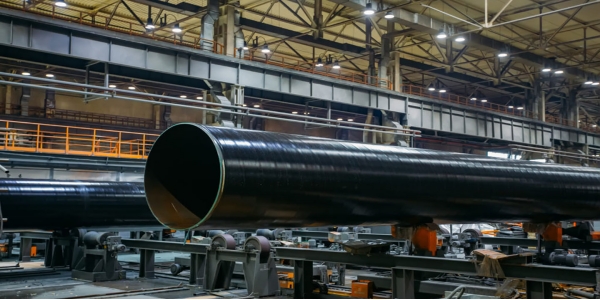PE coated pipe manufacturing process involves the application of a protective layer of polyethylene (PE) onto the surface of pipes to provide corrosion resistance and durability. This process is commonly used in industries where pipes are exposed to harsh environments or corrosive substances. Here's a general overview of the PE coated pipe manufacturing process.

Pipe Selection:
The process begins with selecting the appropriate steel pipes that need to be coated. These pipes are usually prepared in standard lengths and diameters.
Surface Preparation:
The surface of the steel pipes needs to be properly prepared to ensure good adhesion of the PE coating. This involves cleaning the pipes to remove any dirt, grease, rust, or other contaminants that might interfere with the bonding process. This step can involve methods like shot blasting or sandblasting.
Primer Application (Optional):
In some cases, a primer layer might be applied to the cleaned pipe surface. The primer helps improve the adhesion between the steel surface and the PE coating. It also provides an additional layer of corrosion resistance.
PE Coating Application:
The actual PE coating is applied using one of the following methods:
Extrusion Coating:
In this method, the pipes are passed through an extruder that heats the PE material to its melting point and then coats the pipes with a uniform layer of melted PE. The coated pipes are then cooled, solidifying the PE into a protective layer.
Powder Coating:
Powder coating involves spraying a fine powder of PE onto the preheated pipe surface. The heat causes the powder to melt and form a continuous coating as it adheres to the pipe.
Adhesive Coating:
A layer of adhesive is applied to the prepared pipe surface. The PE coating is then wrapped around the pipe, and heat is applied to activate the adhesive, bonding the PE layer to the pipe.
Heating and Curing:
Once the PE coating is applied, the coated pipes are typically passed through a curing oven or chamber. The heat cures the PE, causing it to solidify and adhere tightly to the pipe's surface. This step is crucial for achieving proper adhesion and a consistent coating.
Cooling and Inspection:
After curing, the coated pipes are cooled down. They are then inspected for any defects, irregularities, or imperfections in the coating. Pipes that do not meet quality standards might be rejected or sent for rework.
Final Inspection and Testing:
Coated pipes undergo thorough inspection and testing to ensure the integrity of the PE coating. This can involve checks for adhesion, thickness, uniformity, and resistance to various environmental factors.
Packaging and Shipping:
Once the pipes pass quality control, they are properly packaged to prevent damage during transportation. This packaging might involve protective materials to prevent scratching or other forms of damage to the PE coating.
It's important to note that specific manufacturing processes can vary based on the intended application. For more details, you can contact at: sales@union-steels.com

 English
English Español
Español




 Tel : +86-18565811709
Tel : +86-18565811709 Email :
Email : 

 News
News




